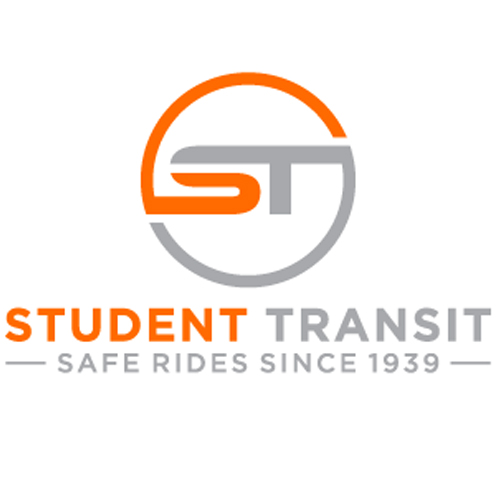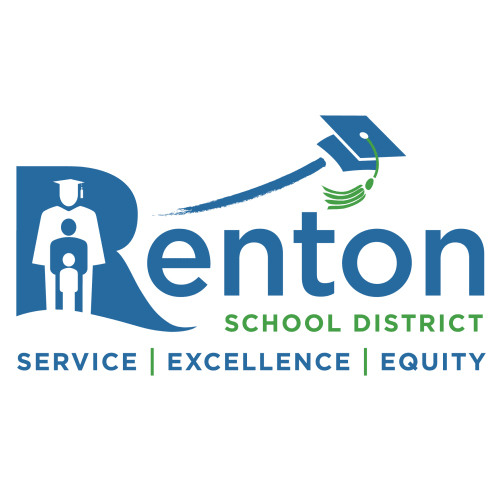Trusted by the Finest Names in School Bus Transportation
Ninety-one percent of school leaders report that their transportation operations are being held back by school bus driver shortages. That’s a staggering number that shows just how difficult it has become to keep school buses running smoothly. When six out of ten districts have had to cut or reduce routes because they don’t have enough drivers, something needs to change.
School bus transportation isn’t just about getting kids from point A to point B. It’s about ensuring students can get to school safely and on time every single day. When buses run late or routes get canceled, students miss valuable learning time. Parents are forced to scramble for alternative transportation, and teachers struggle to start class on time. The entire system gets thrown off track.
This is where school bus management software comes in. These powerful tools help transportation departments work smarter, not harder. They bring together all the information about buses, drivers, and routes into one easy-to-use system. Instead of drowning in paperwork and playing catch-up all morning, dispatchers can spot problems before they happen and resolve them quickly.
In this guide, we’ll explore everything you need to know about software for managing school buses. You’ll learn what these systems do, why they matter now more than ever, and how they can transform your transportation operations. We’ll share real success stories from districts that have saved money and improved their service. You’ll also find practical tips on how to get started and avoid common mistakes. By the end, you’ll understand why this technology has become essential for modern school transportation.


Integrated Student Transportation Software
What is School Bus Management Software?
Bus management software sits at the center of your transportation technology. You already have routing software that plans your bus routes, GPS tracking that shows where buses are on the road, and payroll systems to manage driver pay. But here’s the problem: these systems don’t talk to each other.
That’s where platforms like Bytecurve come in. They create a bridge between your routing, GPS tracking, and payroll systems, serving as the command center that connects everything together.
Your routing software still does what it does best: planning efficient routes. Your GPS system still tracks your buses in real time. But now, instead of jumping between three different systems, dispatchers see everything in one place. They can view which drivers have clocked in, where buses are right now, and whether routes are running on schedule.
When you connect your existing systems through management software, something powerful happens. Routing data flows directly into operations. GPS updates appear in real time. Driver hours automatically sync with payroll. Everything works together as one smooth operation instead of three separate parts.
This integration is what sets modern school bus management apart from the old way of doing things. You’re not replacing your routing system or GPS; you’re making them work better together. The result is a complete, real-time view of your operations that helps you run a safer, more efficient transportation department.
Why This Technology Matters Now
School transportation faces bigger challenges today than ever before. As of September 2024, there were 12.2% fewer school bus drivers on the road than in September 2019, which is a shortage that shows no signs of going away. At the same time, school districts spent an average of $1,153 per student for transportation services during the 2018-2019 school year, and those costs continue to climb.
Transportation directors are under tremendous pressure. They need to do more with less money and fewer staff. Parents want their children to arrive safely and on time. School leaders expect students to be in their seats when class begins. And state regulations demand careful record-keeping and reporting.
Traditional methods are no longer enough. Paper schedules get lost. Spreadsheets quickly become outdated. Phone calls are missed in the chaos of the morning rush. Transportation departments need modern tools to meet modern challenges.
School bus management software helps districts tackle their biggest pain points. It simplifies handling last-minute driver absences, reduces wasted time and fuel, and catches payroll errors before they become costly problems. Most importantly, it helps ensure students get to school safely and on time.
“The calls, complaints, and headaches that were typical with the previous system have been essentially eliminated.”
Current Trends Driving Adoption
The school transportation industry is changing fast. Several key trends are driving more districts to adopt management software:
The Technology Integration Movement: Districts are moving away from having isolated systems that don’t communicate. They want unified platforms that connect routing, GPS, and operations. This integrated approach delivers better visibility and more control. Bytecurve pioneered this category by creating what they call the “dispatch command center”—a 360-degree view of operations that was once impossible.
Real-Time Operations: Parents and administrators expect to know what’s happening right now, not what happened yesterday. Modern software provides live updates on bus locations, driver status, and route performance. This real-time information helps districts respond quickly when issues arise.
Mobile-First Communication: Drivers need to clock in, review their assignments, and receive messages while they’re on the move. Today’s software includes mobile apps that put important information right in drivers’ hands. This two-way communication keeps operations running smoothly.
Automated Payroll and Compliance: Payroll mistakes are expensive and hurt driver morale. With 60% of school leaders reporting that the driver shortage has been severe enough to require shortened or reduced routes, keeping the drivers you have happy matters more than ever. Software that automatically tracks hours and calculates pay helps prevent errors and saves valuable time.
Proactive Exception Management: The biggest shift is moving from reactive to proactive operations. Instead of finding out a driver is missing after the bus should have departed, the software alerts dispatchers immediately. Those few extra minutes can be the difference between a delayed route and an on-time departure.
Benefits of School Bus Management Software
Key Advantages
School bus management software delivers powerful benefits that make transportation operations run more efficiently:
Improved Driver Management: The software shows you which drivers have clocked in and which haven’t. You can view their assignments at a glance and make instant changes when needed. This visibility helps you respond quickly when a driver calls in sick or a bus breaks down.
Smoother Payroll Operations: Automated time tracking means no more poring through stacks of paper timesheets. The system records when drivers clocked in and out, what routes they ran, and what pay rate applies. Payroll staff can verify everything in seconds instead of hours, cutting down on costly errors and making drivers happier.
Better Route Organization: When you can view routes, drivers, and vehicles all in one place, it’s easier to stay organized. You can quickly reassign buses when one breaks down or adjust routes based on real-time traffic. This flexibility helps you handle whatever the day throws at you.
Enhanced Communication: Built-in messaging lets you reach drivers instantly. Need to notify someone about a drug test? Send them a message that pops up when they clock in. Have an update about a route change? Push updates to everyone who needs to know. This direct communication saves time and reduces confusion.
Cost Savings: Better organization leads to measurable savings. You can cover the same routes with fewer buses, catch inefficiencies that waste fuel, and avoid paying for unworked hours. These small improvements add up quickly.
Data-Driven Decisions: The software tracks every detail, giving you actionable insights. You can see which routes consistently run late, identify drivers who need coaching, and spot patterns that help you work smarter and plan ahead.
Real-World Applications
School bus management software proves its value in a wide range of daily situations:
Handling Morning Chaos: Picture this: It’s 6:30 AM, and three drivers haven’t clocked in. In the old days, dispatchers would be frantically making phone calls trying to figure out who’s coming and who’s not. With management software like Bytecurve, alerts pop up automatically, showing exactly who’s missing. Dispatchers can immediately contact substitutes and reassign routes. This saves precious time when every minute counts.
Managing Route Changes: When a bus breaks down or traffic shuts down a road, you need to act fast. The software shows you which buses are available to cover extra routes. You can make adjustments in the system and instantly send updates to everyone involved. What once took 30 minutes of phone tag now takes just a few clicks.
Streamlining Payroll: At the end of each pay period, payroll staff can generate a report showing exactly what each driver worked. The system automatically flags any discrepancies for review. What used to take days now takes hours.
Improving On-Time Performance: Real-time visibility lets you track whether buses are running on schedule and address issues immediately. If a bus is delayed, you can alert the school. If a route consistently runs late, you can investigate and adjust. This proactive monitoring helps maintain reliable, on-time service.
Success Stories
Real school districts are seeing impressive results with Bytecurve management software:
South Bend Community School Corporation struggled with an old payroll system that relied on tons of paperwork and multiple systems that didn’t work together. This made it nearly impossible for payroll staff to process driver hours accurately and efficiently.
LaToya King, who leads the transportation department, turned to Bytecurve to solve these problems. She connected it to her routing and GPS systems to get better organized.
“Managing and organizing the routes was a very real challenge, and we had to invest a lot of time and energy as a team to stay on top of it,” King said. “After integrating Bytecurve into our routing and connecting it to the GPS system, we had a more organized system that gave us a far better ability to organize our routes and be flexible when we needed to be.”
The results made a real difference for the district’s operations and bottom line.
Poway Unified School District in California needed better control over driver time tracking and payroll accuracy. Before Bytecurve, drivers could clock in whenever they wanted, leading to unnecessary overtime costs and payroll headaches.
After implementing Bytecurve 360, drivers could only clock in five minutes before their scheduled time. Bus assignments showed up on screen, so there was no confusion. Making substitutions became much easier. The payroll department could now track and check everything in seconds instead of searching through mountains of data.
“It helps our operations supervisors—they’re now cleaning up routes,” said the district’s transportation director. “There’s the savings, and it’s big dollars.” The superintendent was impressed, too, noting that the team was now ahead of their plan instead of being run by it. “It’s no longer organized chaos; it’s a planned response,” he shared.
Renton School District in Washington faced the challenge that every transportation department knows too well: juggling multiple disconnected systems. Their routing software, GPS tracking, and daily operations felt like separate islands that didn’t communicate.
After bringing in Bytecurve and connecting it to their GPS and routing systems, the district gained the ability to easily reconfigure routes and runs on the fly. The real-time integration meant they could see everything happening across their fleet and make smart decisions fast.
The improved management of daily operations gave the district confidence that it could handle whatever came up. Routes stayed on schedule even when problems popped up. This reliability meant students got to school on time and parents could count on the service.
“We can get a request today and be ready to dispatch a bus tomorrow and not have it disrupt us. busHive makes it easy to route it across all the approvals and get the driver assigned in no time.”
Implementation
Getting Started
If you’re ready to bring school bus management software to your district, here’s how to begin:
Assess Your Current Situation: Take an honest look at where you are now. What are your biggest pain points? Are drivers frequently missing? Is payroll a nightmare? Do routes always run late?
Check Your Existing Systems: Make a list of what technology you already use. What routing software do you have in place? What GPS tracking system? Bytecurve integrates with all the major providers of routing systems and GPS fleet tracking, so nearly any district with these systems can take advantage of the technology. Knowing what you have helps ensure smoother integration.
Set Clear Goals: Define what success looks like for your operation. Do you want to cut payroll processing time in half? Reduce late buses by 25%? Improve driver retention? Setting measurable goals helps you track progress and determine whether the software is delivering results.
Get Leadership Buy-In: Transportation directors need support from superintendents and school boards. Share the facts: 91% of districts face driver shortages, costs continue to rise, and something needs to change. Demonstrate how management software can help solve these challenges and improve efficiency.
Plan for Integration: Good management software works seamlessly with your routing and GPS systems. Bytecurve connects routing and GPS data from major providers, creating a unified view of operations. Confirm that your existing systems are compatible and plan how the data will flow between platforms.
Train Your Team: Dispatchers, drivers, and payroll staff all need hands-on experience with the new system. Schedule training sessions and give your team time to practice before going live. Encourage questions and provide ongoing support to build confidence.
Start Small and Expand: You don’t have to activate every feature on day one. Many districts start with the basics, like driver time tracking and exception alerts. Once those are running smoothly, you can roll out advanced features such as internal messaging and reporting tools.
Best Practices
Follow these proven strategies to get the most from your software:
Use Exception Management Daily: The morning exception report is your best friend. Make it part of your daily routine to check it first thing. This proactive approach means you catch problems before buses leave the yard. Districts using Bytecurve report that this simple feature has transformed their operations from reactive to proactive.
Keep Communication Channels Open: Use the built-in messaging features to stay connected with drivers. Send reminders about training sessions. Share updates about route changes. Thank drivers who go above and beyond. This regular communication builds a stronger team.
Review Data Regularly: Don’t just collect data—use it. Set aside time each week to look at on-time performance, route efficiency, and driver metrics. Look for patterns and opportunities to improve.
Maintain Accurate Records: The system is only as good as the information you put in. Make sure driver assignments are updated. Keep vehicle information current. Enter schedule changes promptly. Good data leads to good decisions.
Leverage Mobile Access: Encourage drivers to use the mobile app. They can check their assignments, clock in easily, and see messages without coming into the office. This makes their jobs easier and gives you better data.
Work With Your Vendors: Build a good relationship with your software provider. They know the system inside and out. Ask questions. Request training refreshers. They want you to succeed.
Document Your Processes: Write down how you use the software for common tasks. This helps when training new staff and ensures everyone follows the same procedures.
Common Challenges
Even the best technology projects face challenges. Here’s how to anticipate and manage the most common ones:
Resistance to Change: Some staff members prefer the old way of doing things, even if it doesn’t work well. They may worry about learning something new. Address this by explaining the benefits clearly and showing how the software will make their jobs easier. Provide plenty of support during the transition.
Technical Difficulties: Integration issues can arise when connecting multiple systems. GPS data might not flow correctly. Payroll calculations might need fine-tuning. Work closely with your vendors to troubleshoot problems. Don’t give up if something doesn’t work perfectly right away.
Training Gaps: Not everyone learns at the same pace. Some people will master the system quickly, while others need more time. Offer different types of training: group sessions, one-on-one coaching, written guides, and video tutorials. Be patient and supportive.
Data Quality Issues: If your current records are inconsistent or incomplete, those issues will carry over to the new system. Take time to clean up driver files, vehicle records, and route information before or during implementation. Good data ensures reliable performance.
Incomplete Buy-In: If only some departments use the system, you won’t realize its full benefits. Make sure dispatchers, drivers, payroll staff, and administrators all embrace the platform. Leadership needs to champion the change.
Unrealistic Expectations: Software is powerful, but it’s not magic. It won’t fix every problem overnight. Set realistic expectations about what will improve and how quickly. Focus on steady progress rather than instant transformation.
Inadequate Resources: Implementation takes time and effort. Make sure that staff are available to handle the setup and training. Don’t try to launch during your busiest season.
The key to overcoming these challenges is preparation, patience, and persistence. Districts that push through the initial difficulties consistently report that the effort was worth it.

Conclusion
The right software connects your routing, GPS, and payroll systems into one powerful platform. Bytecurve created this new category of technology by recognizing that school bus operators needed more than powerful yet independent systems. They needed these systems to work together through a new layer of visibility and action—a true dispatch command center.
The software helps you spot problems before they derail your morning. It cuts payroll processing time from days to hours. It gives you the flexibility to handle last-minute changes without chaos. More than 40,000 school buses now rely on Bytecurve technology to improve their efficiency and safety.
Real districts are seeing real results. They’re saving money, improving on-time performance, and making their operations run more smoothly. The technology has moved from nice-to-have to must-have.
If your transportation department still relies on paper schedules, manual payroll, and reactive problem-solving, it’s time to explore modern solutions. Request a personalized demo of Bytecurve’s school bus management software to see how it works in real time.
School bus management software won’t solve every problem, but it will give you the visibility, control, and efficiency you need to do more with less. It helps you focus on what matters most: getting students to school safely and on time, every single day.
The question isn’t whether your district can afford to implement this technology. With transportation costs and challenges rising, the real question is whether you can afford not to.
Contact Bytecurve today to get started and discover how your district can save time, cut costs, and deliver safer, more reliable transportation for every student.
Frequently Asked Questions
How does school bus management software like Bytecurve differ from routing software?
Routing software plans your bus routes and schedules. Management software like Bytecurve takes it a step further by sitting between your routing software and your payroll system, connecting them with GPS tracking and daily operations. It’s the bridge that links all your systems together. Think of routing software as creating the plan, while management software helps you execute that plan every single day. You still need routing software, but Bytecurve makes everything work together better by creating a 360-degree view of your operations.
Will my drivers need smartphones to use the system?
Most modern school bus management platforms include mobile apps for drivers, but they’re designed to be simple and user-friendly. Drivers use them to clock in, check their assignments, and receive messages. Basic smartphones work fine—you don’t need the latest expensive models. Many districts provide devices to drivers who don’t have their own. The mobile features make operations smoother, but drivers can also access basic functions through office computers if needed.
How long does it take to implement school bus management software?
Implementation timelines vary based on your district’s size and complexity, but most districts are up and running within 4-8 weeks. The process includes connecting the software to your existing routing and GPS systems, cleaning up your data, training your staff, and testing everything. Some districts start with basic features and add more over time. The key is not to rush—taking time to do it right means fewer problems later. Your software vendor should provide a detailed timeline and support throughout the process.
What happens if the software has problems during the morning rush?
Good management software is built to be reliable, but reputable vendors also have backup plans and support available. Most systems can work offline temporarily if internet connectivity is lost, and data syncs when the connection is restored. Vendors typically offer technical support during critical hours. That said, you should always maintain basic backup procedures like printed emergency contact lists. The software makes operations better, but smart districts keep simple backup plans just in case.
Does my district need to have specific routing or GPS systems to use Bytecurve?
Bytecurve integrates with all the major providers of routing systems and GPS fleet tracking. This means virtually any school district that already has both a routing system and GPS tracking can take advantage of the technology. The platform was designed to work with what you already have, creating that critical connection layer between your existing systems rather than forcing you to replace them. During the initial consultation, the team can confirm compatibility with your specific systems and plan the integration accordingly.

Secure
Only authorized employees will be able to access DriveOn based on a customer specific access code. This code can be turned off as needed by an authorized administrator.

User friendly
DriveOn is easy to use with a simple, smart interface.
Available on both iOS and Google Play stores.





